The church in Luková – Only for the brave of heart! Visit a haunted church

St. George’s Church, looking down from the hill over the charming little village of Luková, was built back in the 14th century. Yet it’s not its age or its architecture that attract visitors from all over the world to see it. They’re drawn by its mystical atmosphere, which has led to the church becoming known as one of the most haunted places in the world. The church acquired its reputation back in the 1960s, when the plaster suddenly collapsed during a funeral. The locals obviously believed it was an omen, and never returned to the church.
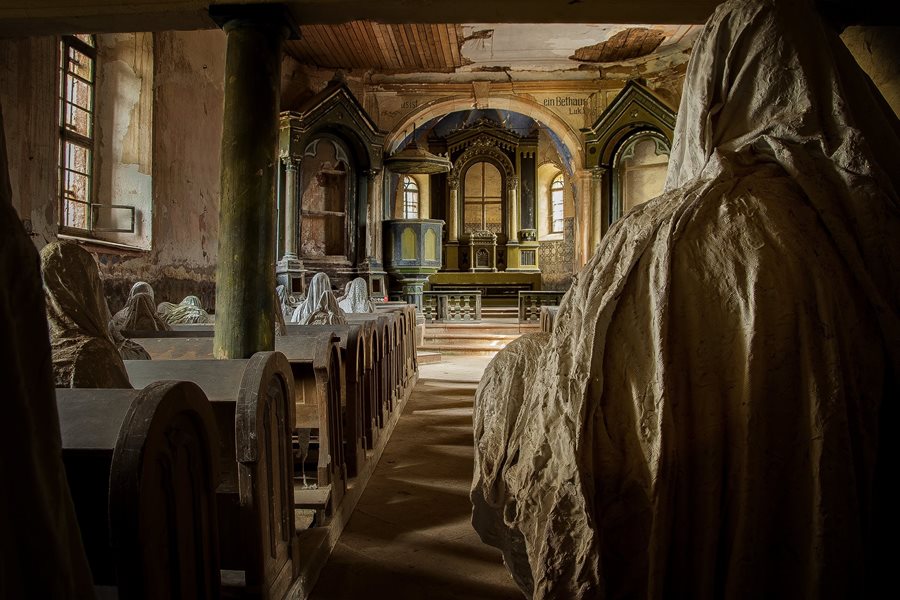
The dilapidated place of worship had to wait more than 50 years for its “resurrection”. Then there came along a young Czech artist, who crowned the already unique genius loci of this abandoned church. As part of his Bachelor’s thesis he installed 32 plaster statues of ghosts on wooden pews. They are intended to symbolise the Sudeten Germans – the former inhabitants of this region who were expelled after the Second World War. Pluck up the courage and venture out to Luková, too. It’s not something you experience every day.
The church in Karviná – The Czech Pisa or the Church in the Middle of Nowhere
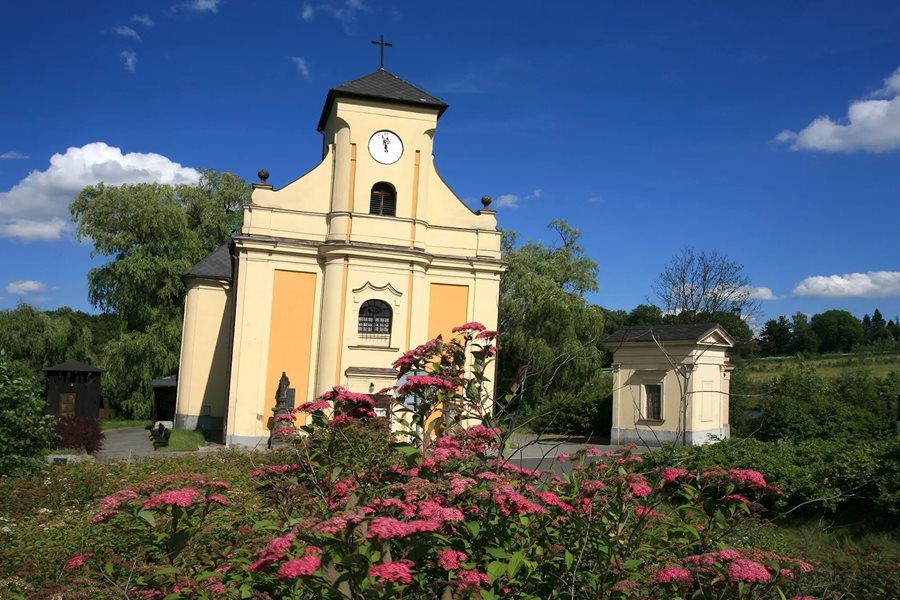
Not far from the town of Karviná with its spa and charming château there stands a true Czech rarity out in the “middle of nowhere” – the most crooked building in Czechia, the Baroque Church of St. Peter of Alcantara. However, what makes it so unique is not just the angle it leans at, which is even greater than that of the famous tower in the Italian town of Pisa (that strange feeling when you’re standing on level ground and the walls around you are falling is something you simply have to experience). Thousands of visitors come to this crooked church, as it’s most often called, for its story, too.
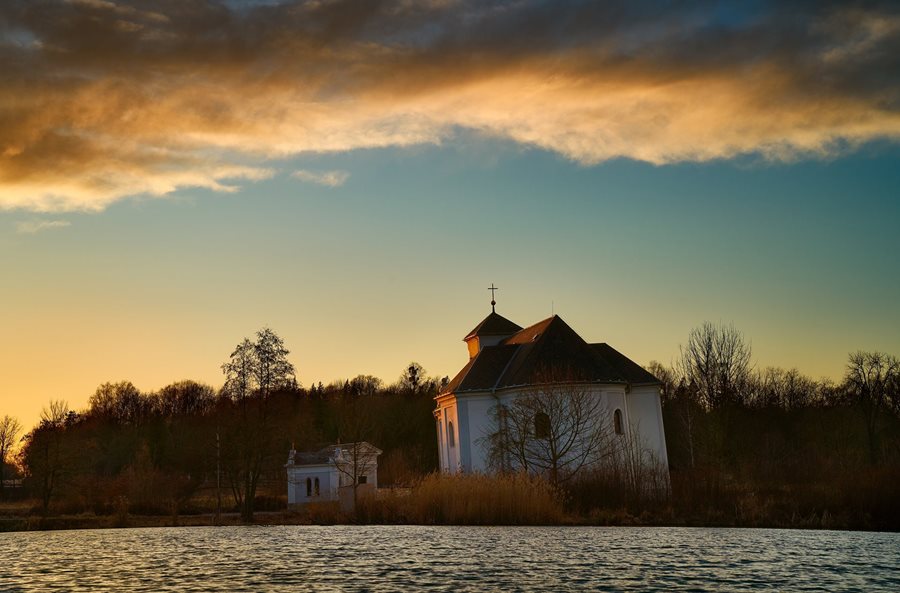
The “nowhere” in the middle of which this church stands used to be a pretty and thriving town. Karviná used to have grand houses, a château, mining colonies, a brewery, schools, and, in addition to the Church of St. Peter of Alcantara, one other more recent church. The town was primarily associated with coal mining. However, what was originally the force that drove the dynamic growth of the town gradually led to its ruin. As a result of undermining, almost the whole of Karviná disappeared! Just a few buildings are all that remains today. Including the crooked church.
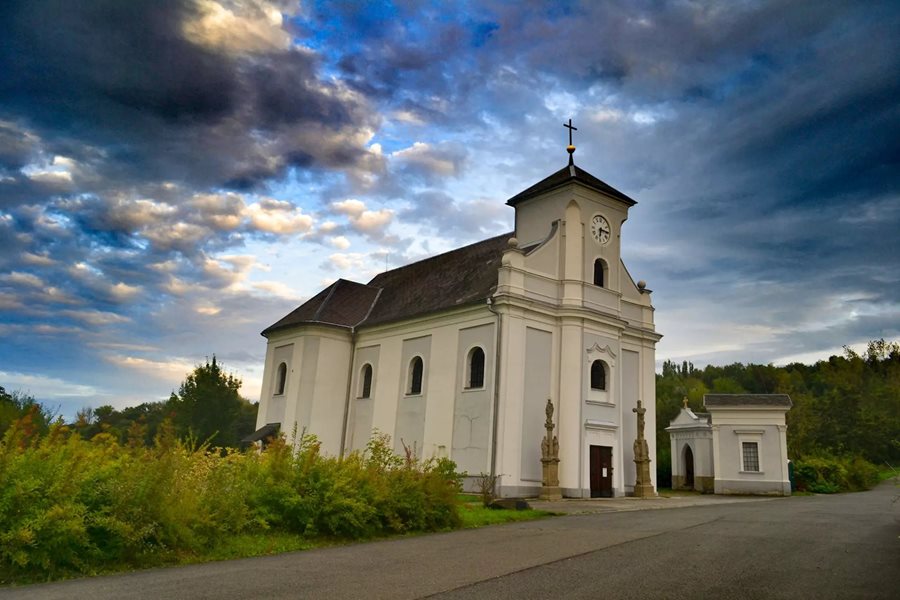
From when mining first started, the ground under it subsided 37 metres! Nowadays it’s hard to imagine that the church once looked down on the town from the top of a hill. Back in the early 19902 the crooked church was at risk of collapsing and was listed for demolition. Luckily, however, it was eventually repaired and this silent witness to the town’s demise now shines again in all its glory.
You can visit it on Sundays, when services are held there alternately in Czech and Polish; in the 2023 summer holidays, as part of the Open Churches↗ project, the church is open from Friday to Sunday, and at weekends in September and October.
Incidentally, the church in Karviná is the most crooked building in the country; for the most crooked tower, visit the Church of the Assumption of the Virgin Mary in Ústí nad Labem.
The church in Neratov – Services under the skies
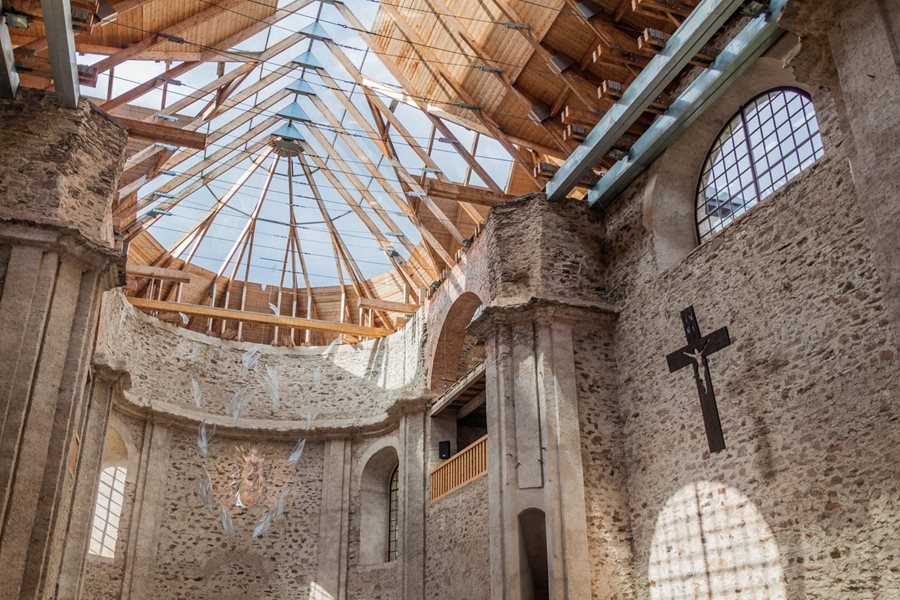
And the Baroque church in Neratov, almost on the Czech-Polish border, instantly recognisable with its glass roof, might also not be standing today. Its history dates back to the 17th century, when Neratov became an important pilgrimage site, especially due to the miraculous spring that rises by the church. The original church ceased to be sufficient to hold the rising number of pilgrims, and so a new on was built on a hill in the early 18th century.
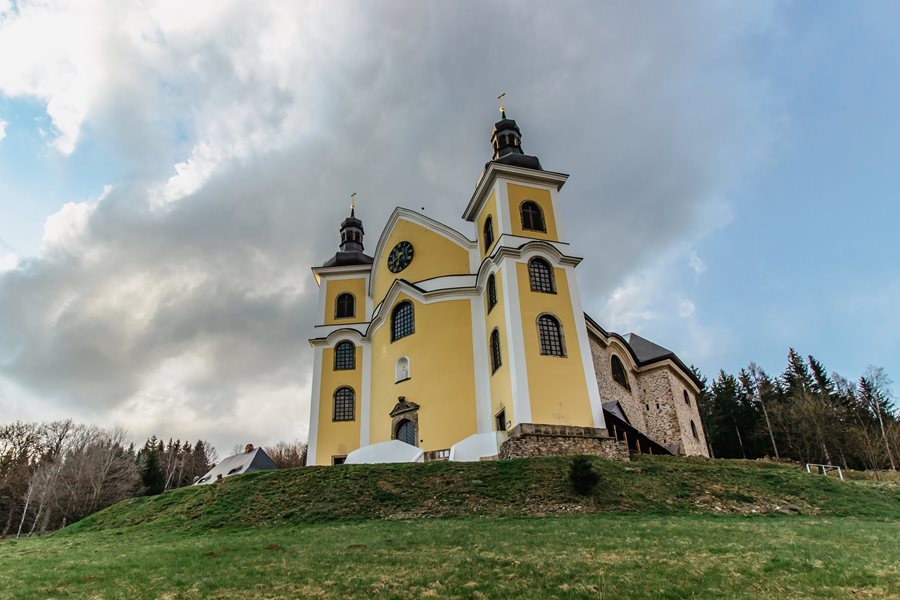
However, in 1945 it was hit by Red Army artillery and the church burned down. The inhabitants of Neratov, mostly Germans, were then expelled and the village almost vanished off the map. During the communist era, it was even listed for demolition! Fortunately, however, there was not enough funding to knock it down. It was not until the 1990s that the first repairs were made to the church; the forgotten pilgrimage tradition was revived and in the new millennium the famous glass roof was added.
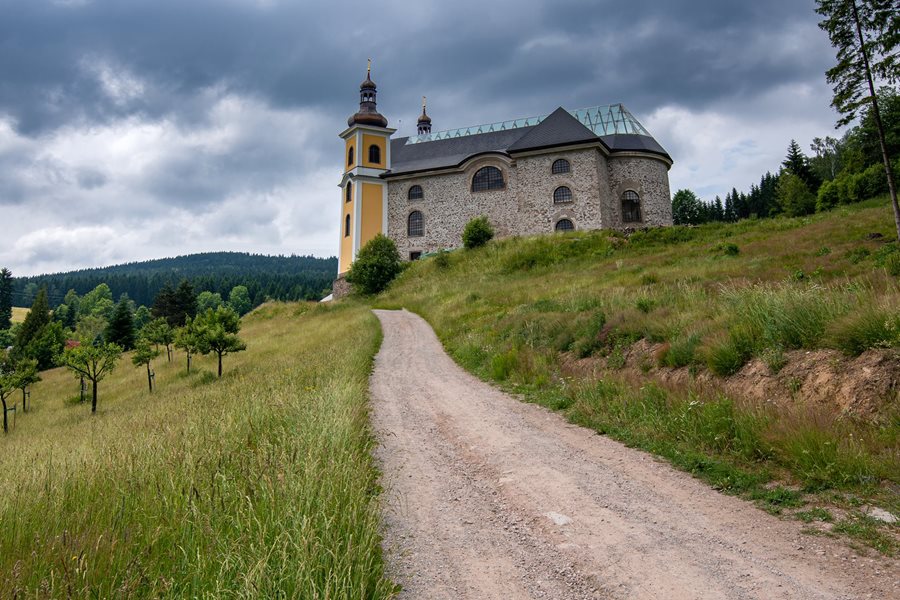
This happened completely spontaneously. Before the roof was installed, churchgoers attended services in the building under the open skies. When it was decided to add a roof to the church, they didn’t want to lose that special atmosphere they’d enjoyed in the services. And so the decision was made - the new roof would be made of glass!
And when can you visit the church in Neratov? Anytime! If you want, you can go there at 2 in the morning and gaze at the night sky through the glass roof. Because, as the local priest says, what’s the point of churches that are closed…
The church in Most – A giant that has roamed the region
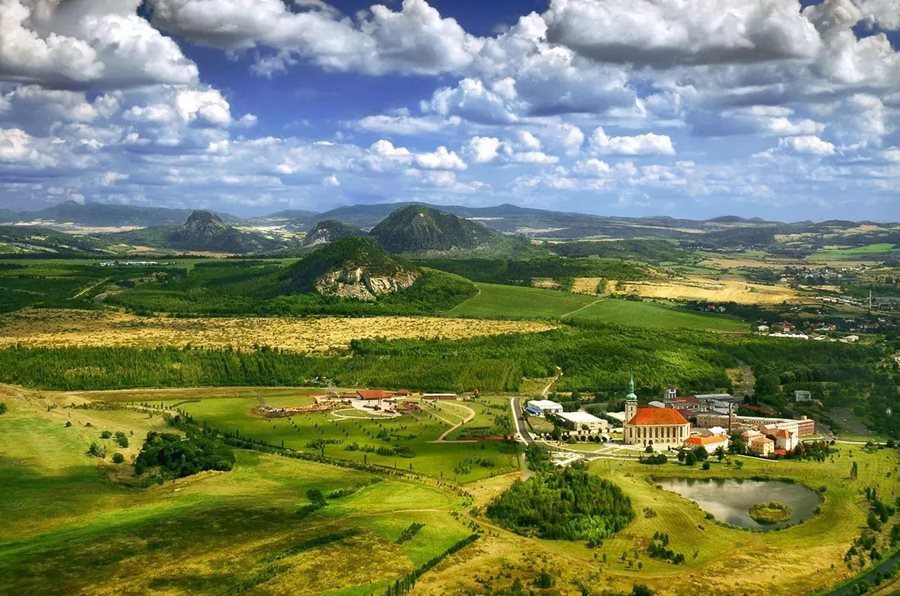
A few decades ago the area around the Church of the Assumption of the Virgin Mary in Most looked completely different. The church used to stand almost a kilometre away, on a site that now lies below the sparkling waters of Most Lake. However, in the second half of the 20th century the communist government decided that Most, whose history dates back almost 700 years, would have to become a coal-mining town. Only one monument was preserved - a 16th-century church. Its move to near the Baroque hospital with its Gothic church even earned it a place in the Guinness Book of Records! The 12-thousand-ton church is the heaviest object ever to have been moved on wheels.
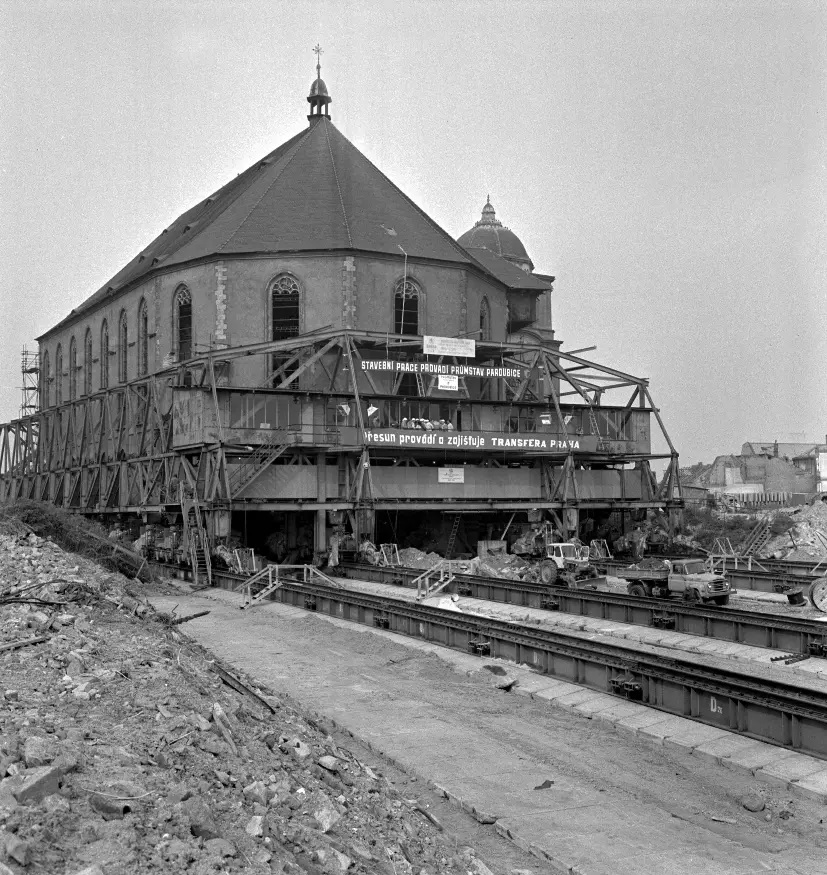
And how was it transported? First of all the church, which was 60 metres long and more than 30 metres high, was detached from its original stone foundations and steel girders were placed under the brickwork. Trucks were then slid under them (made, incidentally, in the Škoda factories in Plzeň, and the loading process started. Movement along the four-rail track was controlled by a computer; the glass control room was located at the front of the church.
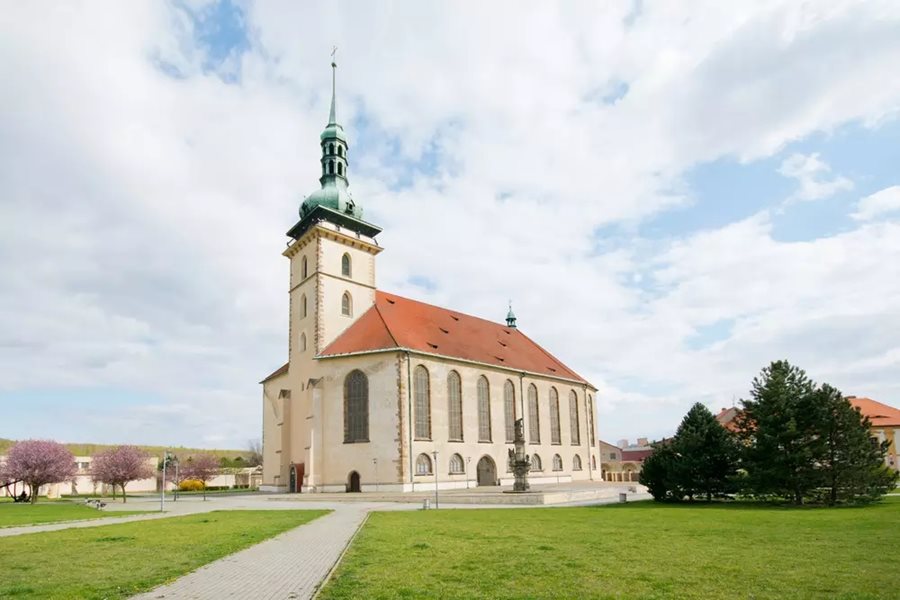
The church set off on its journey on 30 September 1975. It covered the distance of 841.1 metres in 646 hours, at a speed of 1.2 to 3.2 centimetres a minute. The only visible sign that it was moved is the church’s unusual orientation towards the south rather than the east.
The church in Žďár nad Sázavou – The Santini Code
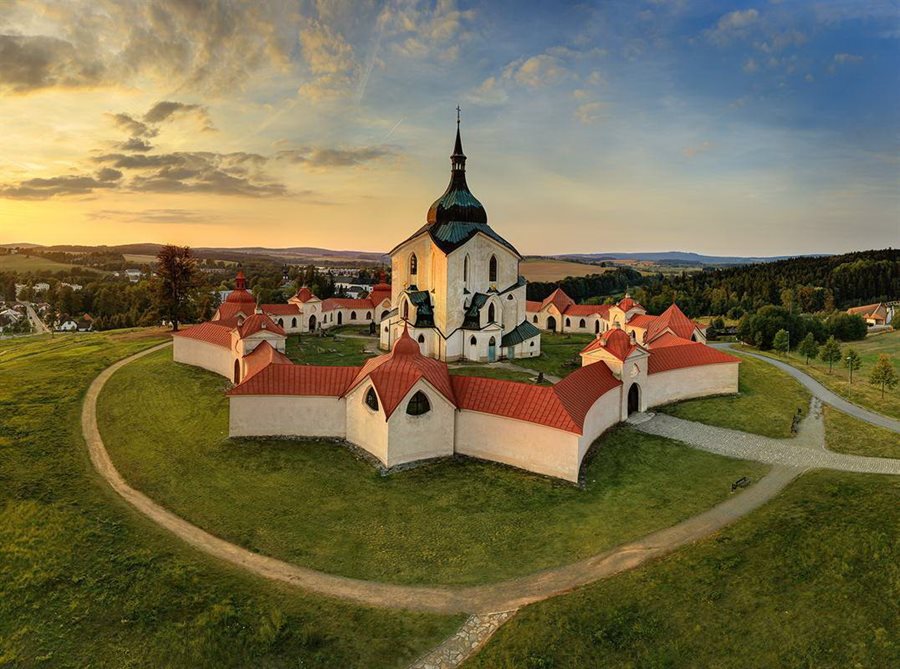
Fans of mysticism and symbolism will be in their element at the Church of St. John of Nepomuk on Zelená hora in Žďár nad Sázavou. This Baroque building, which has even listed as a UNESCO World Cultural Heritage Site, is undoubtedly the most original building by the genius architect Santini, who also designed the UNESCO church in Kutná Hora.
The church in Žďár nad Sázavou, built as an homage to Czechia’s most famous saint, John of Nepomuk, blessed and canonized at the time the church was founded, is riddled with symbolism based around the number five: the ground plan of the church is in the shape of a five-pointed star, it has five entrances, five altar niches, two sets of five chapels around the central area, and the main altar features five angels and five stars.
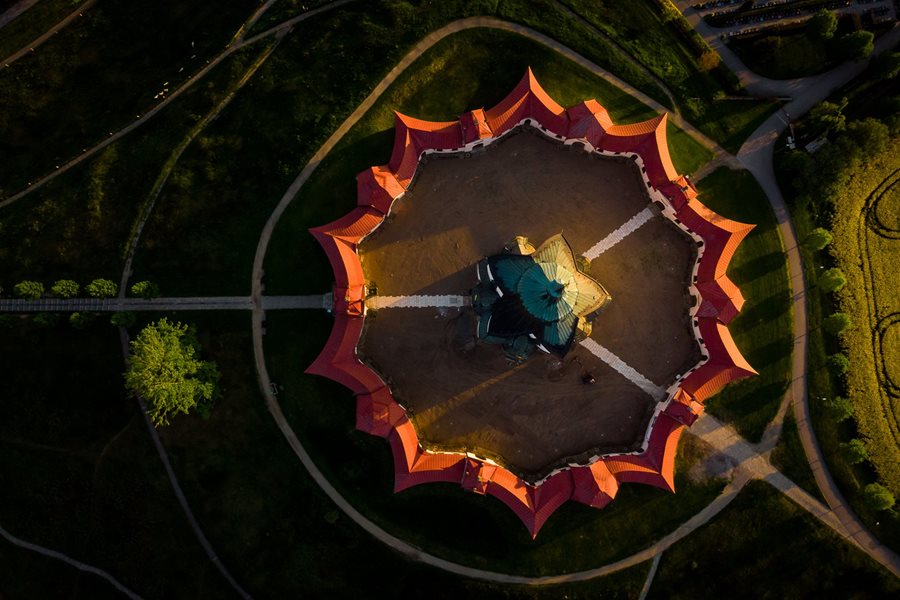
This not only symbolises the five wounds of Christ, but also the five letters in the Latin word "tacui” (I was silent). These commemorate the legend that Nepomuk refused to reveal his confessional secret, even under torture. Last but not least, the number five symbolises the five stars on John of Nepomuk’s halo, which the same legend has it appeared in the Vltava when his body was thrown from Charles Bridge in Prague. So give it a try - how many “fives” can you find?
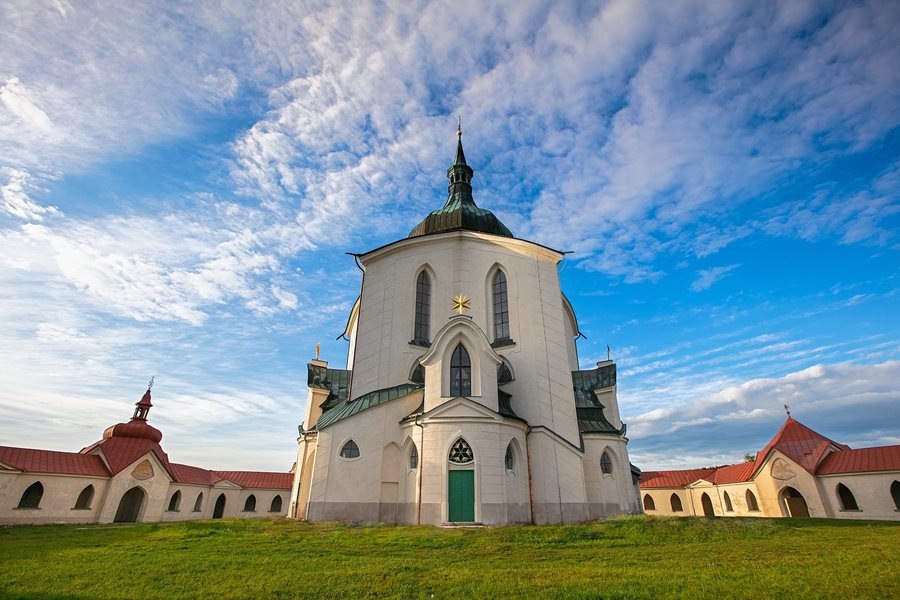
Incidentally, St. John of Nepomuk is the patron saint of bridges and water, priests, confessors, millers, rowers, ice-makers and pilgrims, Bohemia, Bavaria, patron of the House of Habsburg and the Spanish navy, and a protector from floods and calumnies.
The church in Panenský Týnec - Less matter, infinite energy

You’ll be flooded with a unique sensation the moment you set foot inside the unfinished Gothic abbey church in Panenský Týnec. It is not completely clear who built this mysterious edifice or exactly when, although it probably dates from the 14th century. What is certain, however, is that this is a place like no other. It is not just its artistic value that makes it one of Czechia’s most perfect monuments; the stone walls of the church are said to hold potent energy with the power to heal!
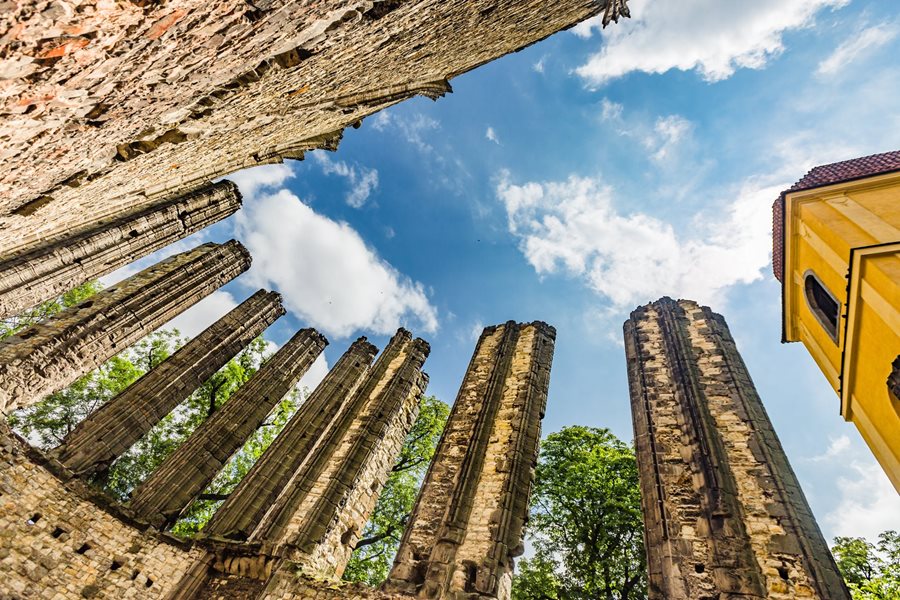
It’s no wonder that this mysterious place has attracted healers and parapsychologists from all over Europe for centuries. They have even measured the highest possible positive zone reading in the church! The spiritual energy there is said to ease depression, elicit a good mood, well-being and joy in life, and to aid the sick. People suffering cerebral palsy or who have had a stroke or a head injury are recommended to regularly spend time sitting on the grass in the middle of the building. You don’t have to worry that you might not recognise the places with magical energy. Just follow the well-trodden paths and seek out the spots "worn down” by touch on the walls of the church.

And whether you sense positive energy or not, you’re sure not to forget the unique, mysterious atmosphere of the shell of that Gothic church.













